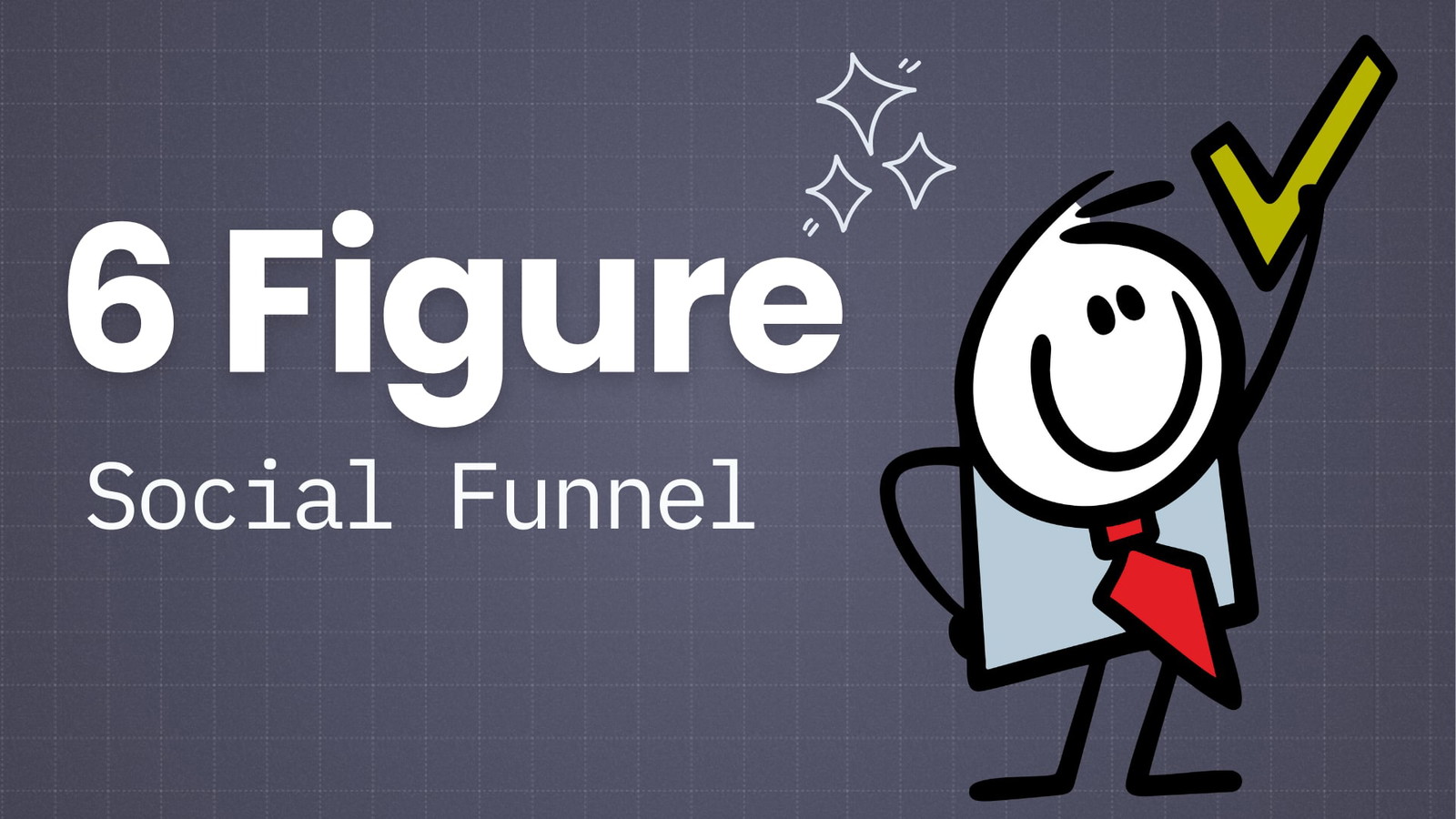Starting a book blog is a rewarding experience for avid readers.
Beyond indulging in more of your favorite tales, you have the chance to connect with like-minded enthusiasts and even monetize your passion.
Here at Authority Hacker, we’ve turned quite a few blogs into revenue-generating machines. Here’s a small portion of the money we’ve made blogging:

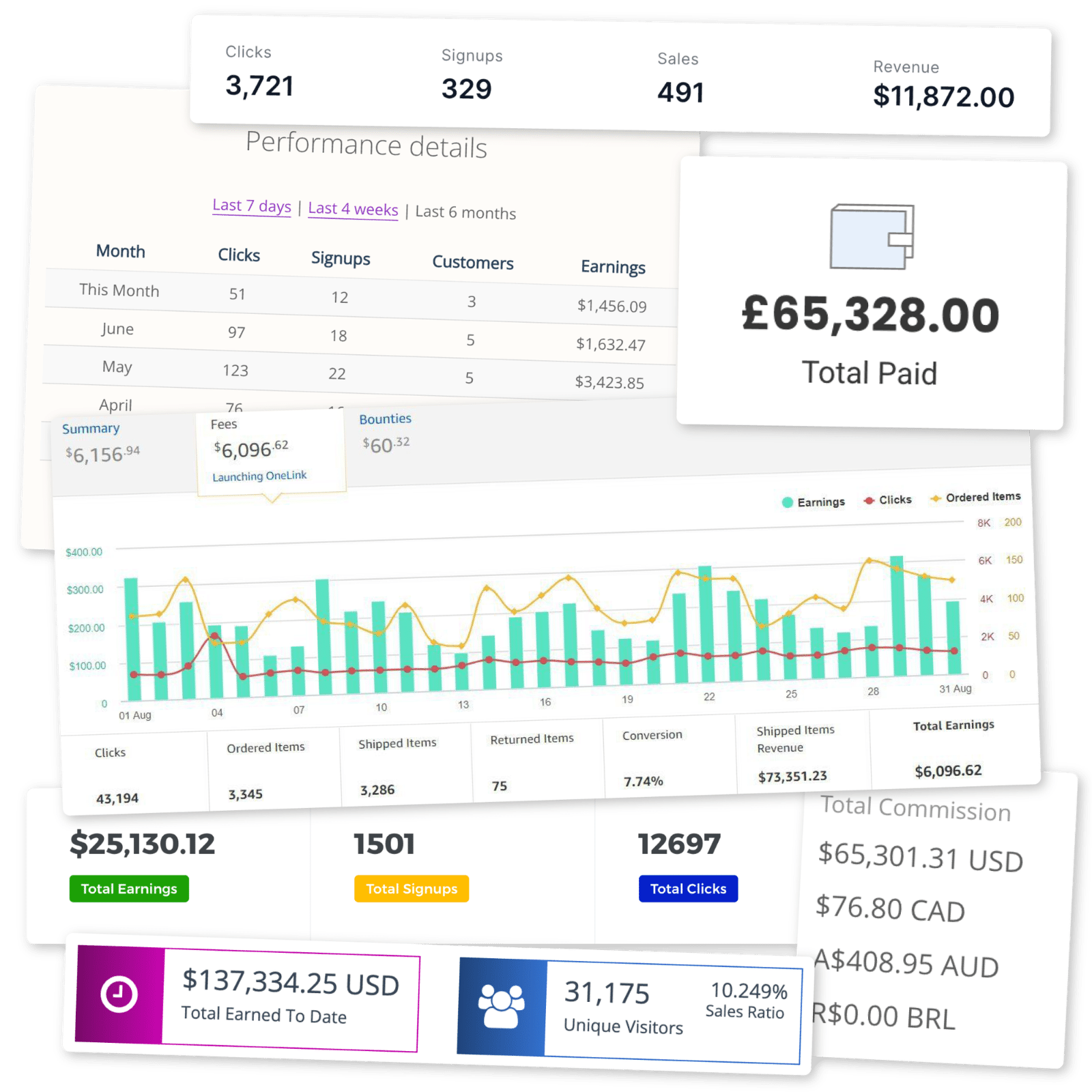
We’ve also helped 15,000+ students launch their own successful blogs – including many in the book niche.
This step-by-step guide will help you follow in their footsteps.
Why Start a Book Blog
Book lovers are always looking for their next great read. As a passionate bookworm, you can help other readers find the books they’ll love.
But there are plenty of other great reasons to start your own book blog.
For starters, book blogging gives you the perfect excuse to read even more than you already do.
As your blog grows, you’ll also build a community around the types of books you love to read. You’ll also be able to interact with the existing book blogging community.
Of course, starting a book blog also allows you to make money from your reading. You can run ads on your site, promote books through affiliate links on sites like Amazon and AbeBooks, and even sell your own books or other digital products.
Examples of Successful Book Blogs
If you want to start a book blog, it’s helpful to take a look at what successful book bloggers are already doing.
Here are three book blogs that are popular with readers and making money from their content.

The Story Sanctuary
The Story Sanctuary reviews children’s books, with a special focus on content warnings.
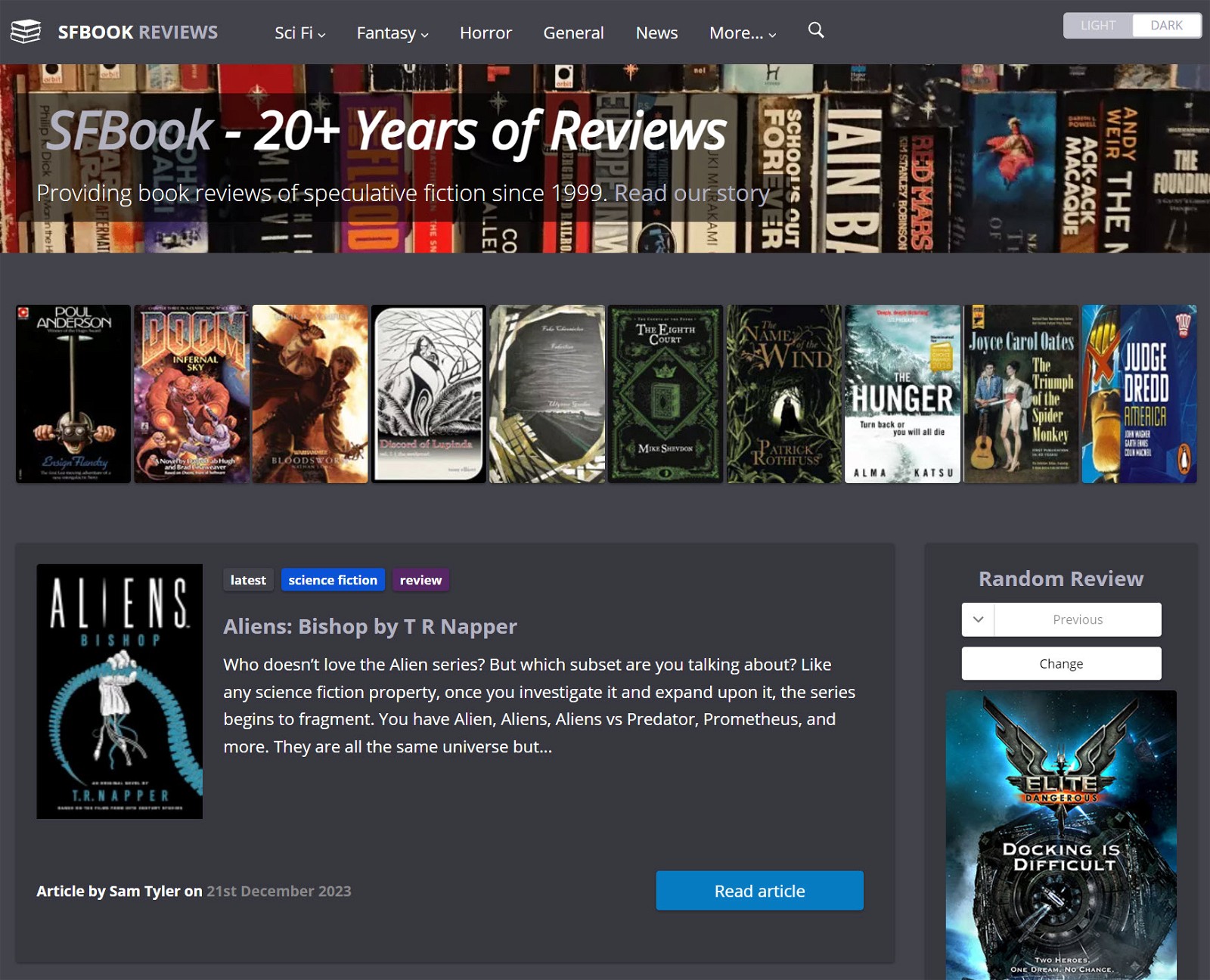
SFBook
SFBook Reviews covers science fiction and horror books, which gives them plenty of material to work with. The site has been around since 1999, which shows that book blogs can be successful over the long term.
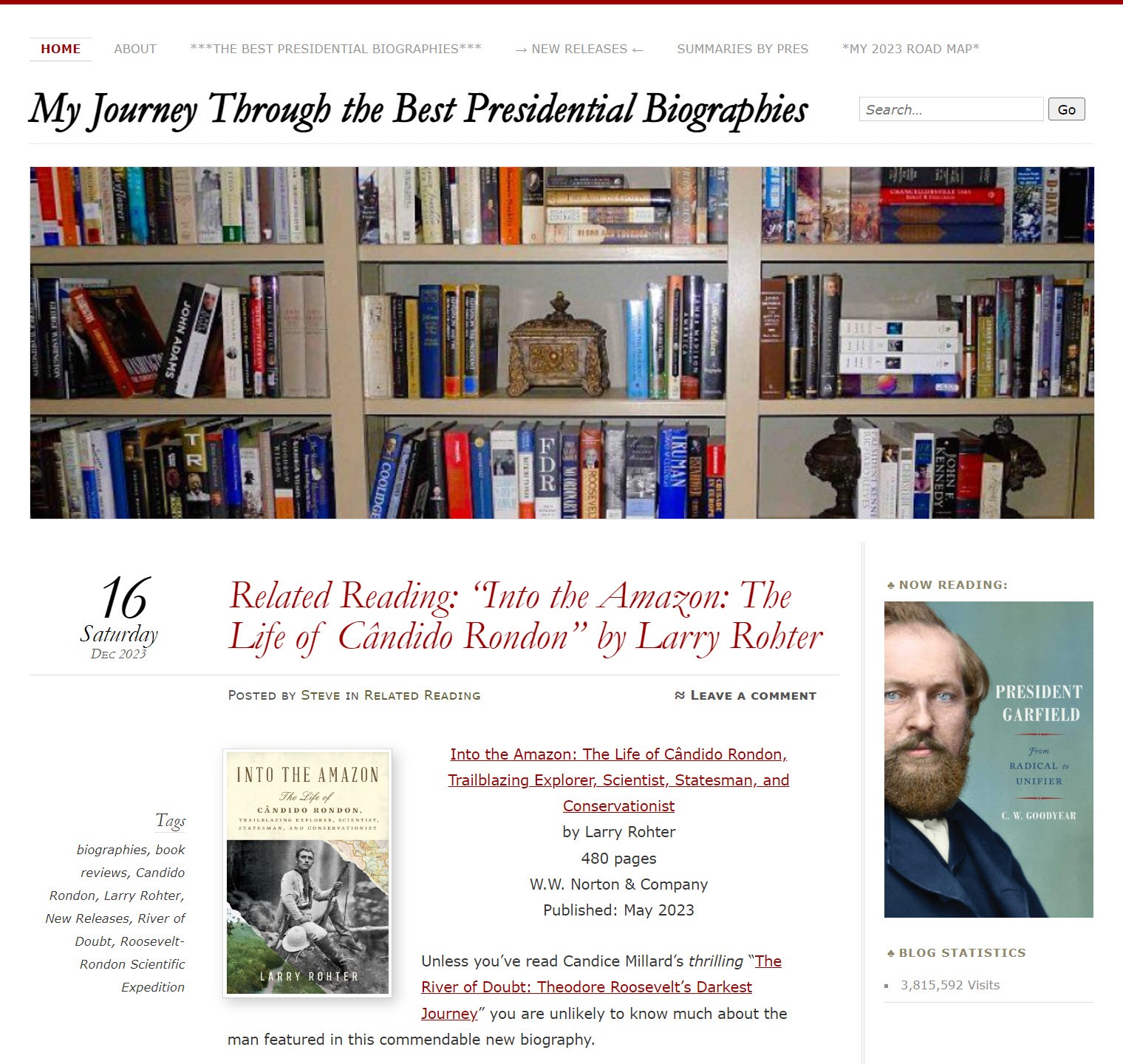
Best Presidential Bios
Best Presidential Bios focuses on biographies of U.S. Presidents and other historical political figures.
How To Start a Book Blog in 10 Steps
Now that your creative juices are flowing, here’s a 10-step guide to starting your own successful book blog.
1 Narrow Down Your Book Niche
The world of books is one of the broadest niches of all, as there are hundreds or thousands of books covering every topic you can imagine. You can’t review them all, so it’s important to narrow the focus of your new book review blog.
Picking a specific sub-niche to blog about will help you connect with your audience and give your new site the best chance for success.
Niching down helps because readers have specific interests, and they’ll gravitate to sites that focus on their interests. For example, if you’re a fan of biographies, you’d likely prefer to read a blog specializing in biographies over a general book blog covering many genres.
So, how do you decide which sub-niche to target with your new book blog?
Start by considering which books you like to read and would enjoy reviewing.
Here are some genres you might consider for your sub-niche:
- Romance: Love stories across all sorts of settings, from historical romances to post-apocalyptic worlds
- Children’s Books: Parent guides, reviews of picture books, kids’ nonfiction, chapter books, etc
- YA (Young Adult): Spans most other genres, with books aimed at a pre-adult age group
- Mysteries: Cozy mysteries, mid-century noir, Victorian detective stories, and more
- Sci-Fi: Everything from campy aliens to hardcore science in a fictional setting
- Horror: Broad sub-genre that often incorporates elements of other sub-genres, all with a scary slant: vampires, ghosts, haunted houses, haunted romance, etc
- Finance: Books dealing with money issues – this gives you the chance to niche down even further into areas like personal finance, retirement planning, estate planning, and more
- Biographies: True stories about famous people
- Westerns: Classic tales about the rough-and-tumble life of the old west
Having a passion for the books you’re reviewing will keep you interested in your blog over time. But you must also ensure your sub-niche is popular enough for your site to succeed.
The best way to do this is to choose a focus area where other blogs are already drawing a lot of traffic and making money.
Here’s our recommended strategy for finding sub-niches with a history of book blogging success:
Make a list of successful blogs in each book sub-niche you’re considering. Blog aggregators like Detailed can help with this. You can also search Google for keywords you might write about or use the “Organic Competitors” tool on Ahrefs to find websites similar to a blog you already know about.

Check traffic levels. High traffic levels are one of the best indicators that a site is successful. You can check the traffic for each of the blogs you identified above by signing up for a free trial of SE Ranking, plugging in the site URL, and then studying the Competitive Research section.

Compare prospective sub-niches. Google Trends is a great tool for helping you compare the relative traffic levels of several potential sub-niches.

If you’re still having trouble choosing a sub-niche for your book blog, watch our detailed guide on niche selection.
Once you go through the process above, take a day or so to decide, but don’t let it slow you down too much. Getting started with a topic that looks good is much better than getting stuck in analysis.
2 Choose a Blogging Platform
Once you’ve settled on a sub-niche, it’s time to decide on a platform for your new blog.
A blogging platform is a service that hosts your site online and serves your content to visitors.
Some beginning bloggers choose a free social blogging platform, like Medium or Blogger.
However, while these platforms might save you money upfront, they have some serious drawbacks:
- You can’t control the look and feel of your blog.
- Some types of content might not be allowed or even possible.
- It’s hard to monetize a blog on these free platforms.
Building your own website is the smart choice if you want the freedom to build your blog the way you want and unlock its full monetary potential.
Here are a few benefits of building a self-hosted blog:
- You have full creative and editorial control of your site.
- No one can shut down your blog or the platform it runs on.
- It’s easy to make money relative to other platforms. For instance, you can promote products and run display ads on your self-hosted site.
See our guide to monetizing a blog for more information. - You can take full advantage of SEO (search engine optimization) and social media to drive traffic to your blog.
- You can build an email list to diversify your traffic sources and protect your traffic from algorithm changes.
Many of the most successful bloggers have built 6-figure incomes with self-hosted sites. That wouldn’t have been possible on one of the more limited platforms.
The best platform for most blogs is WordPress – specifically WordPress.org (not WordPress.com).

WordPress.org gives you free access to the WordPress platform, and there are thousands of themes and plugins you can use to customize your blog.
While WordPress is the best choice, it’s not the only option. Read our list of the best blogging platforms for alternatives.
3 Choose Your Domain Name
Now that you’ve chosen WordPress as your platform, you need to pick a domain name for your new blog.
A domain is the unique web address for your site and includes the domain name plus an extension, like .com or .net.

It’s important to pick a good domain name because it forms the foundation of your brand. It should be memorable and make it easy to understand what your blog is about.
Here are some tips for choosing a great domain name:
- Choose a .com domain. No other extension is as recognizable and trusted as .com. Even so, there are other choices out there. See our post on .com alternatives for other possibilities.
- Match it to your niche. Your domain name should give readers an idea of what your site is all about. For example, ravishingreads.com might be a good choice for a romance book blog.
- Keep it broad. Don’t make your blog name so specific that you can’t expand into other sub-niches down the road if you want. You might start out reviewing sci-fi books, for example, but eventually decide you want to include other genres.
- Keep it short. Short domain names are easy to remember and type. Try not to pick a name longer than 3 words.
- Make sure it’s not trademarked. Check your domain name ideas on the USPTO site to ensure no one else owns the name.
If you’re having trouble coming up with a good domain that’s still available, AI domain generators like Brandsnap can help:
Once you pick a domain name, you need to buy it. You should be able to snag a .com name from a registrar like Namecheap for about $10 per year.
4 Buy Web Hosting
Now that you have a domain name, you need to set up web hosting for your new book blog.
A web host is an online service that provides the infrastructure to store, manage, and serve your site online.
It can be tempting to start with a popular, inexpensive option like Bluehost to save money.
However, we recommend picking a more robust host right off the bat. SiteGround is a great choice for most bloggers, providing superior speed, reliability, and support, which will be important as your site grows.
Here is a quick step-by-step walkthrough of setting up Siteground hosting:
Step 1: Go to Siteground’s WordPress hosting page.
Step 2: Pick the StartUp plan since it’s the least expensive and has everything you need for a new blog. Note that the price increases after the first year.
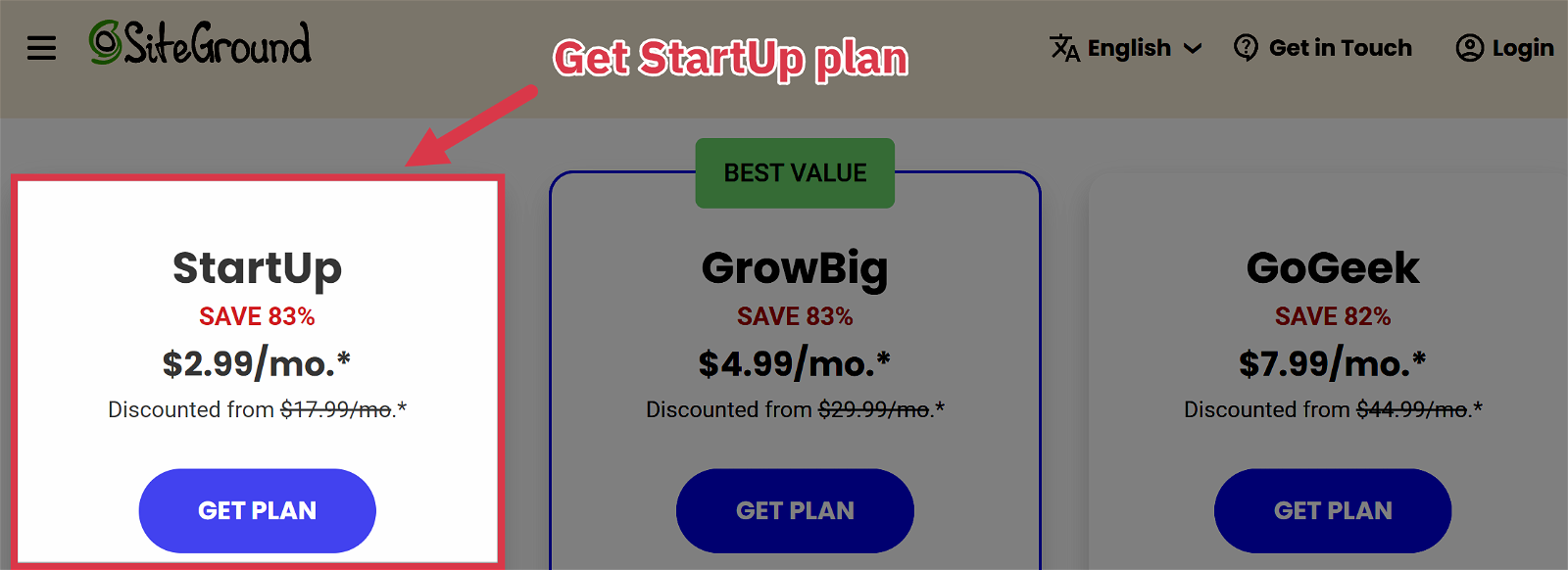
Step 3: Select “I already have a Domain” and enter your domain name.

Step 4: Fill in your account and location details.

Step 5: Enter payment info and choose the subscription length – the 12-month option is usually the best deal.

Step 6: Skip the extra services since you won’t need them for a new blog.
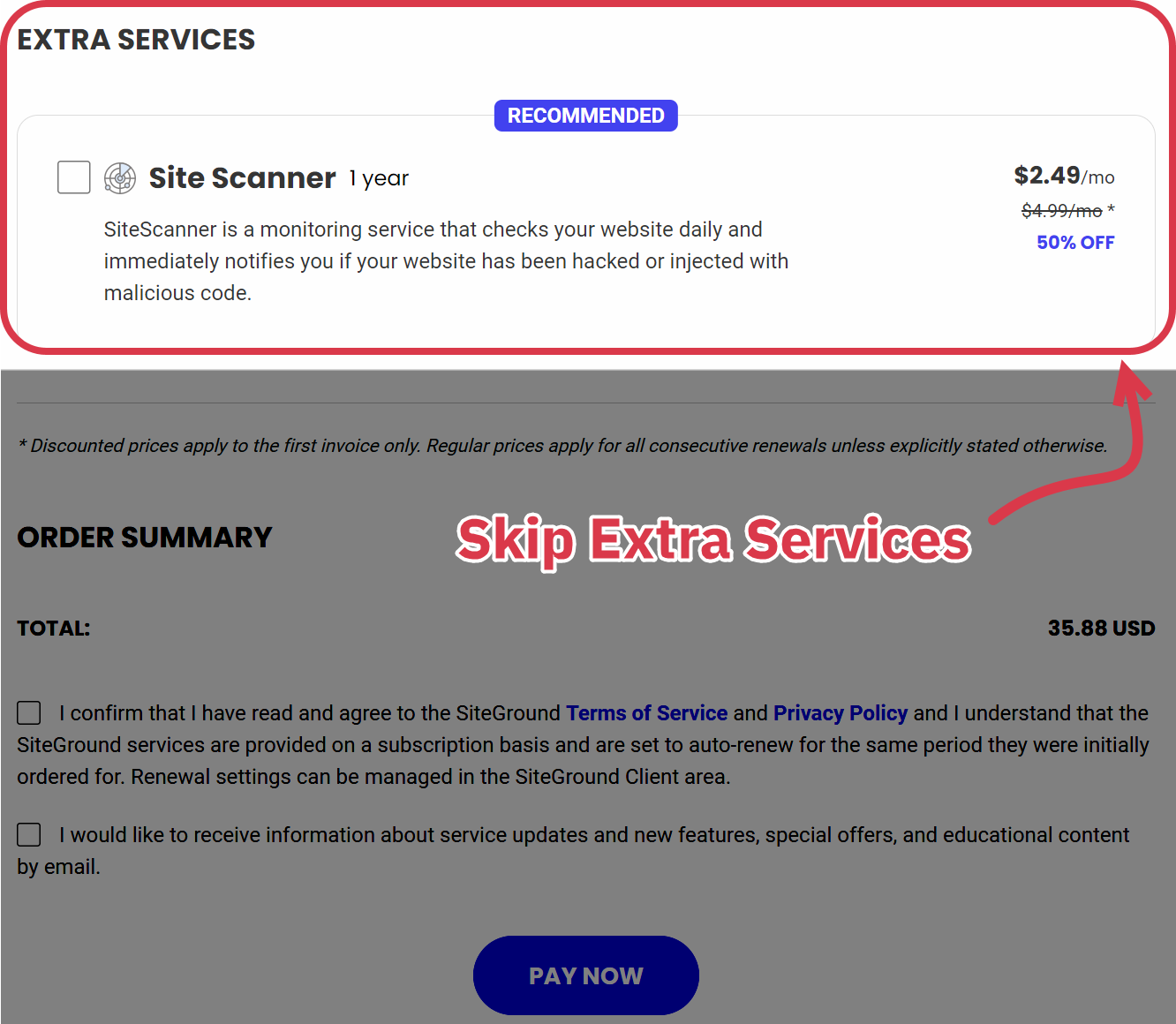
Step 7: Point your domain to SiteGround. If you bought your domain from Namecheap (or another registrar), you need to change the DNS settings to point to SiteGround. SiteGround support can help with this.
That’s all there is to it! Your hosting is set up, and your new blog is ready for action.
5 Choose a Theme for Your Book Blog
Now that you have web hosting, it’s time to set up your blog and choose a WordPress theme.
A blog theme provides the framework for how your content will be presented to visitors when they land on your blog. It should complement your sub-niche and your brand to help make a strong connection with your readers.
For example, many successful book blogs tend to show book-related images and feature lots of text. Script and typeset fonts are also popular, as are themes that allow you to show a grid of the books you’ve reviewed.
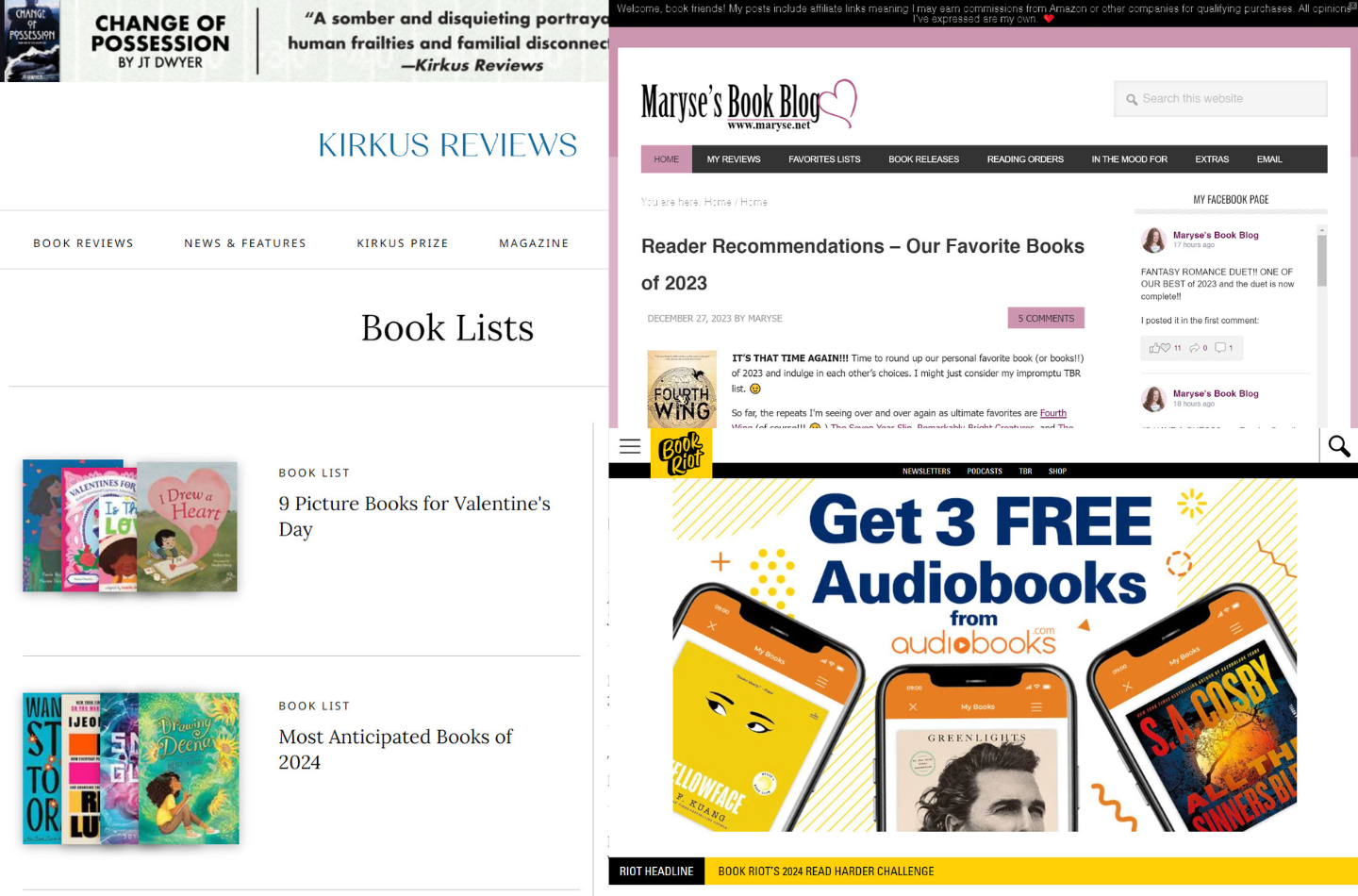
You can either choose a free WordPress theme or pay for a more premium one.
It’s okay to start with a free theme, but make sure it also has a paid upgrade option. Most free themes have limitations that will slow you down as your book blog starts to pick up steam.
Some of the best themes we’ve found for new blogs are “freemium” themes like Astra, Kadence, and GeneratePress.
They all have template libraries to help you get rolling quickly, and they all let you start for free before upgrading later.
Once you pick a theme, here’s a quick step-by-step process to install it on your blog:
Step 1: Go to your WordPress dashboard.
Step 2: Go to the left sidebar and select Appearance > Themes
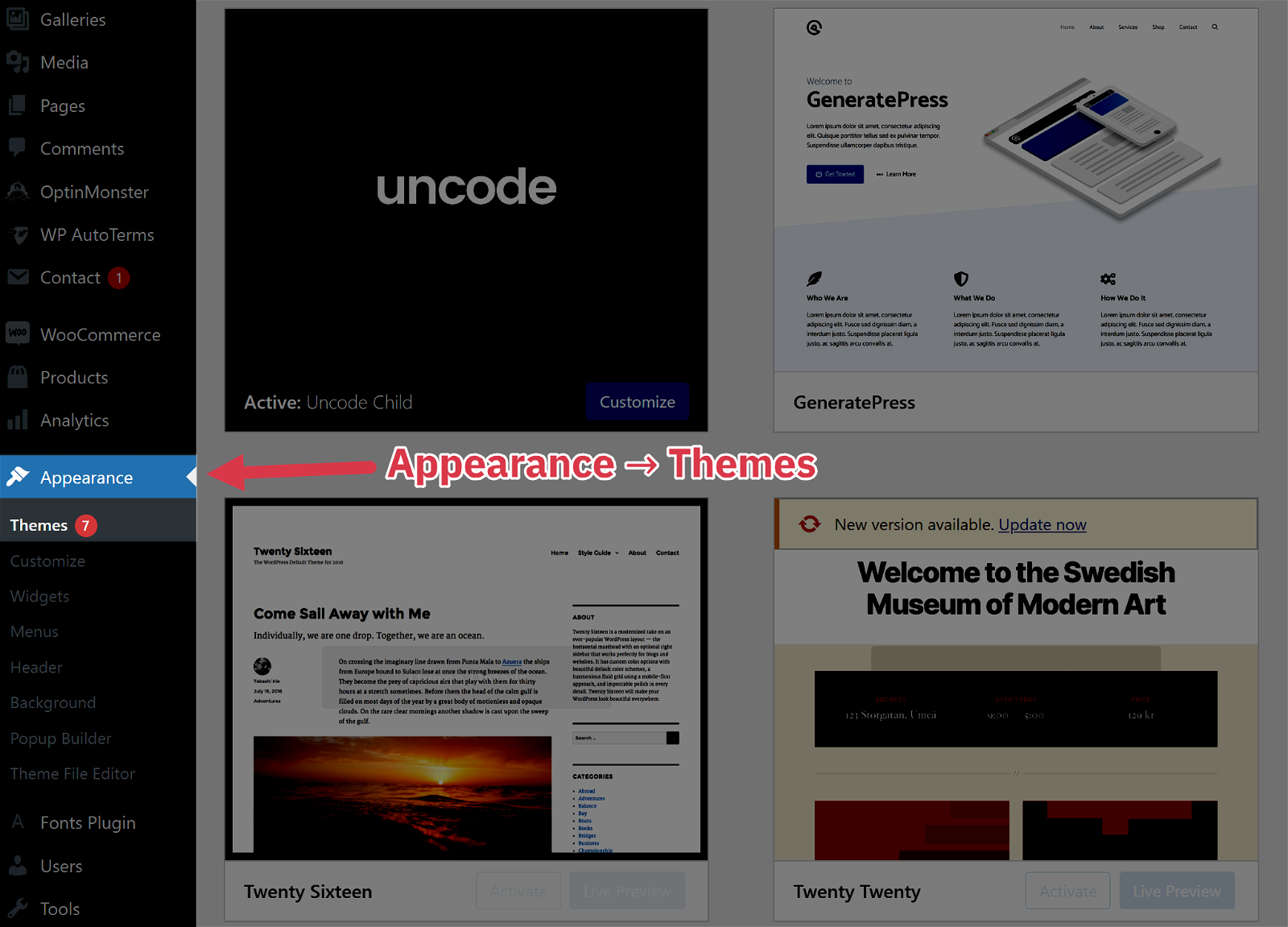
Step 3: Click “Add New”
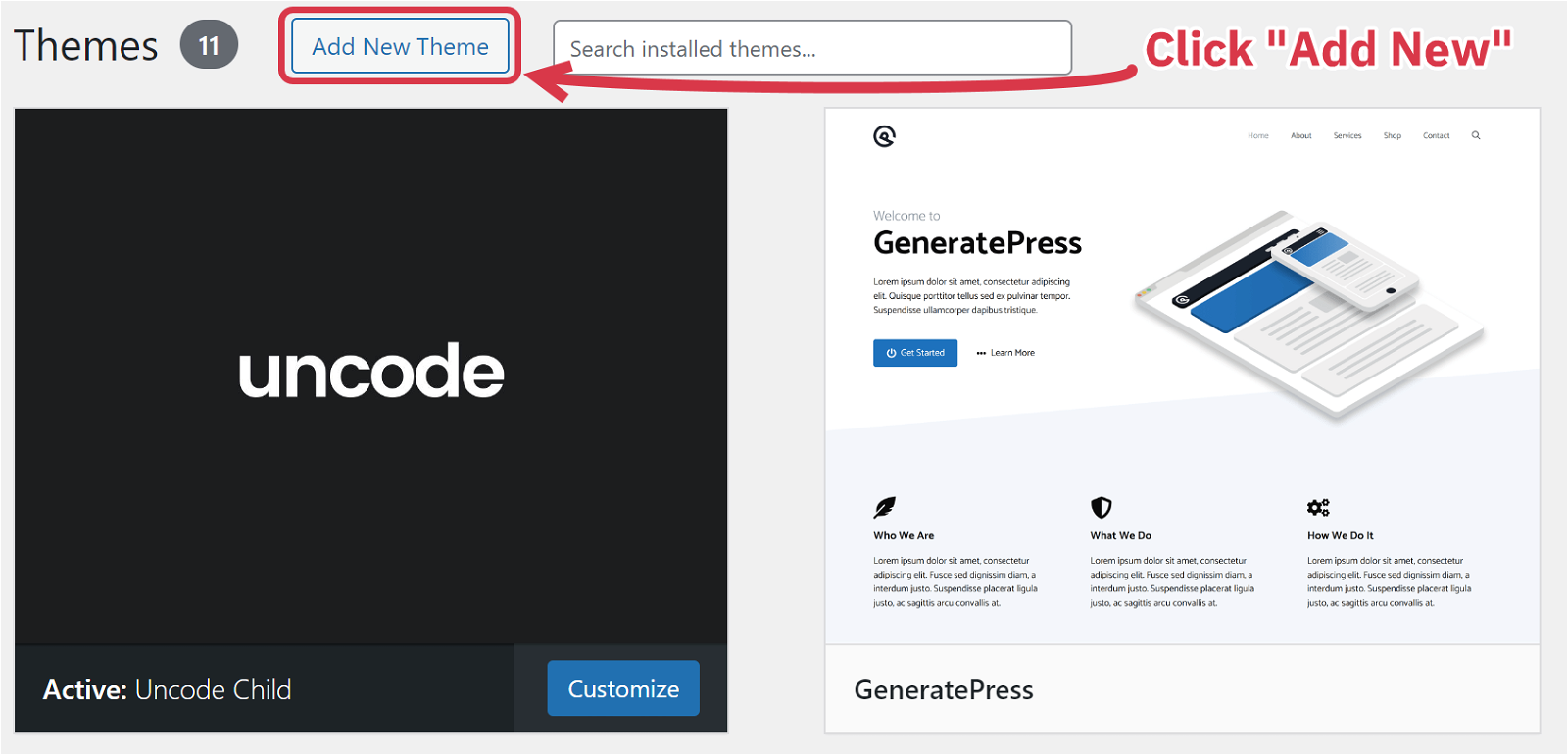
Step 4: Upload your theme file and click Install.
Step 5: Activate your theme.
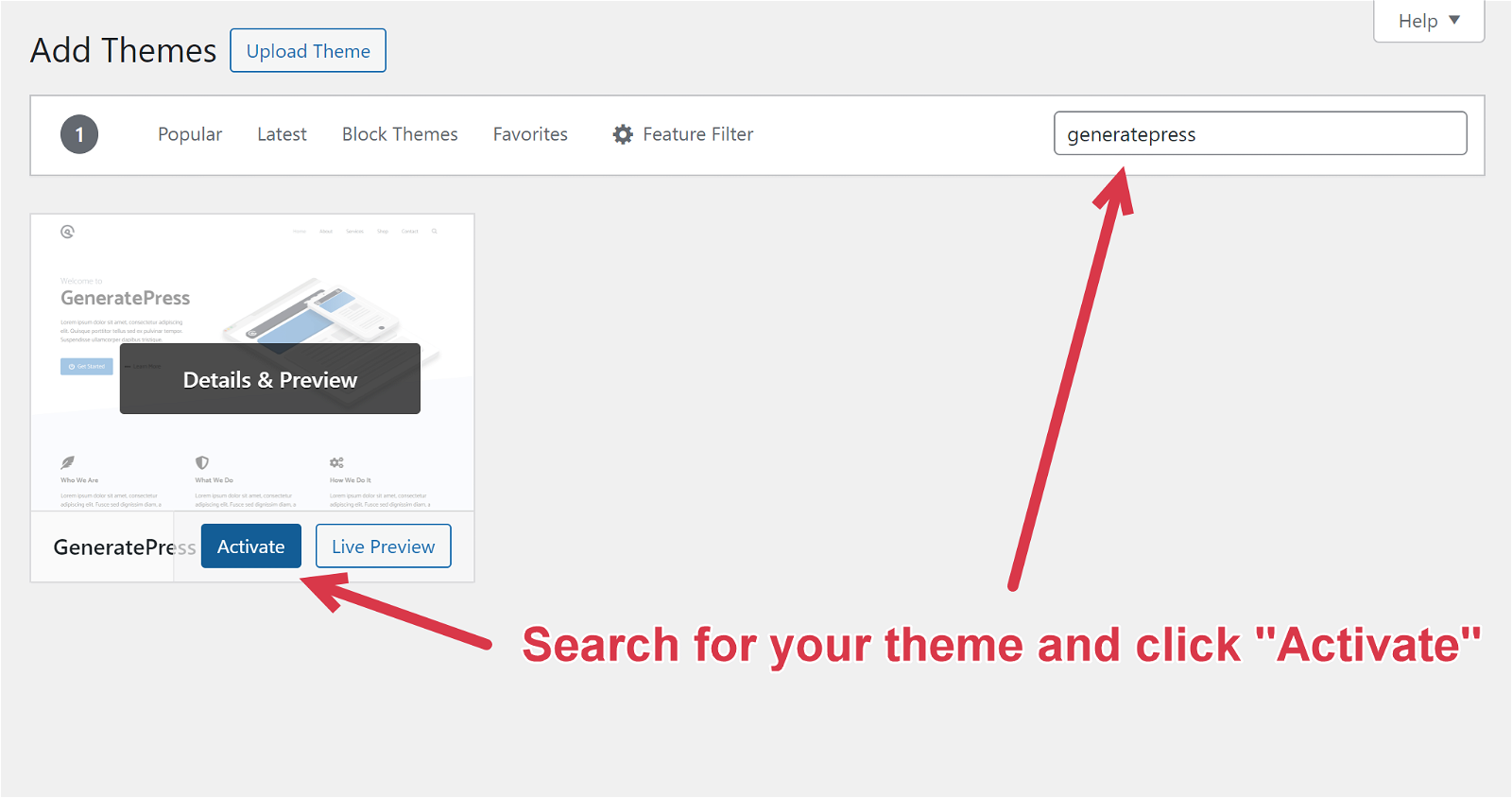
And you’re done! With your theme in place, it’s time to start customizing your new website.
6 Decide on Design & Branding
Your WordPress theme lays out the basics of your design, but now you have the chance to fine-tune your site to match your brand and sub-niche.
The first step is to choose a color palette, which is the set of colors you’ll use across your site. The colors you pick here will affect the rest of your design, so getting them right is important.
Try to pick colors that go well with your book sub-niche. For example, a mystery book blog could use a palette of intriguing and suspenseful colors like dark green, burgundy, and navy blue, complemented by accents of silver or pale grey.
Luckily, you don’t have to have an eye for design to build a great palette for your site. Instead, you can use Coolors to come up with a set of colors that work great together and fit your niche.
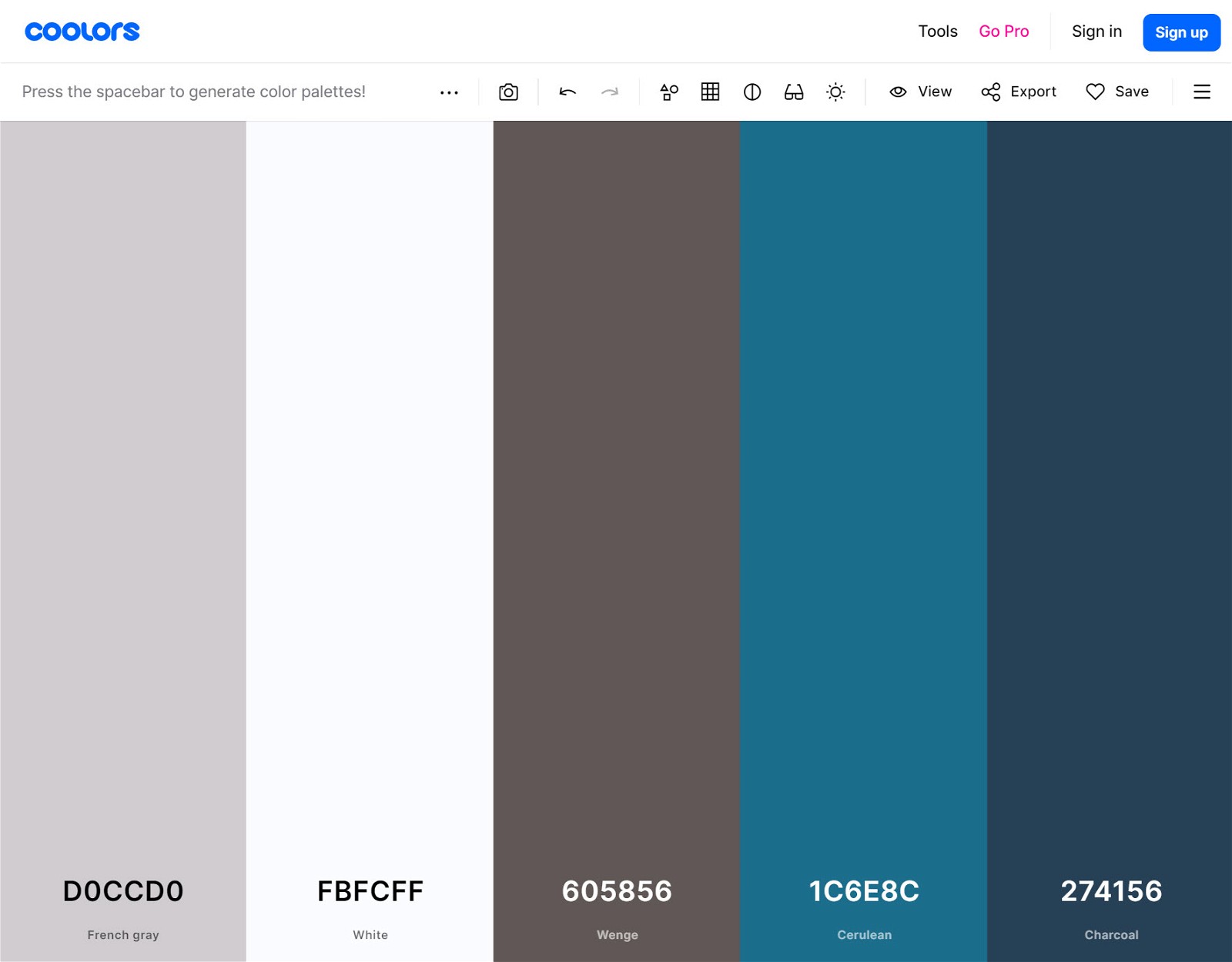
Once you have your colors in place, you need to design the logo for your site. This is another vital piece of your brand identity and is one of the first things most visitors will see when they visit your site.
Like your chosen colors, your logo should fit your niche and brand. Fellow book bloggers often use logos that show books and imagery from their sub-niche. A romance book blog, for example, might use hearts coming out of a book with a simple script font.
You don’t need design experience to create a high-quality logo that makes a lasting impression. I recommend using a Canva logo template and customizing it to fit your blog.
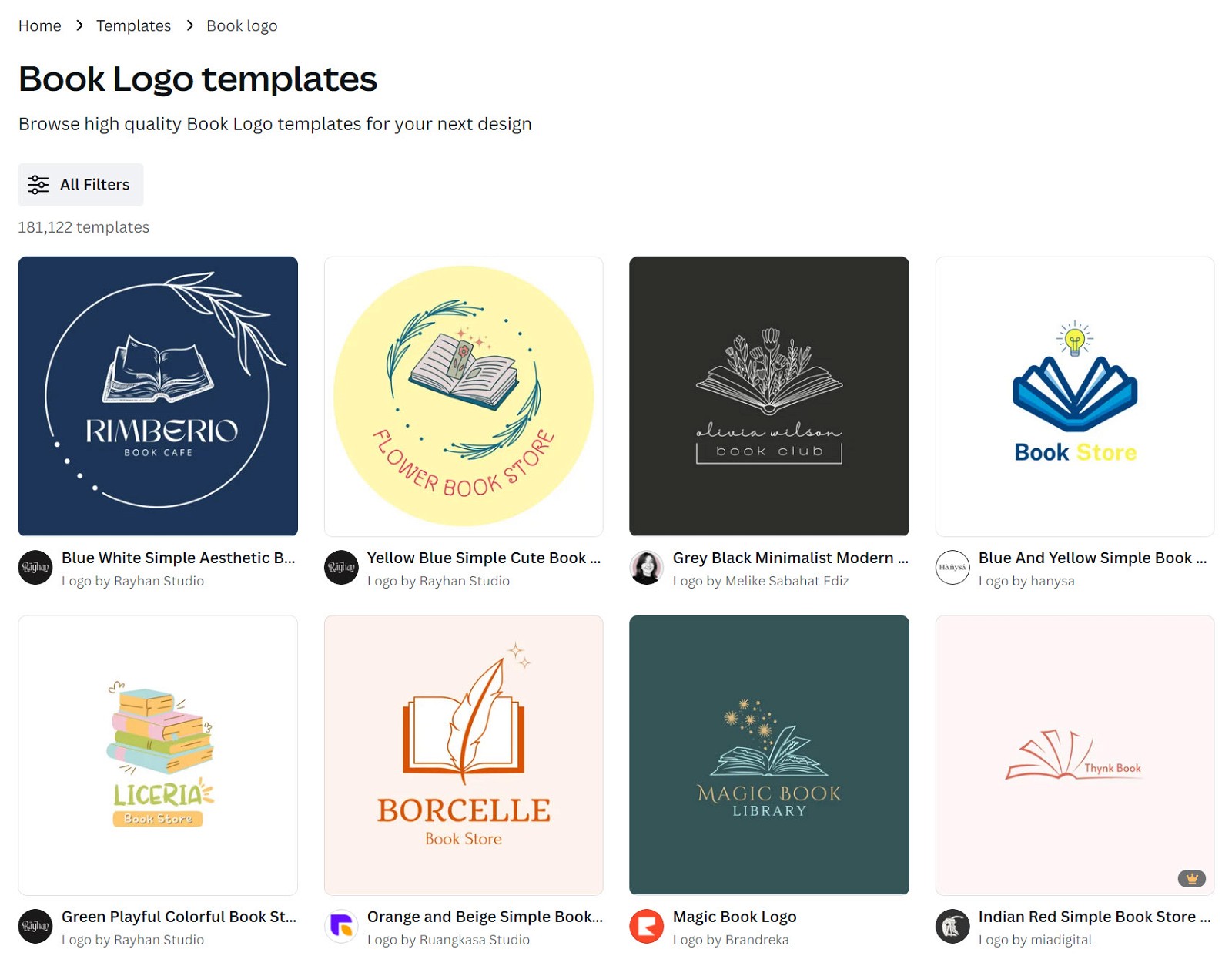
Go to Canva, type in “book logo,” and customize your favorite to match your colors and branding.
7 Create Essential Pages
Your blog is starting to take shape, so now you need to create some essential pages. Every site needs these, so don’t skip any!
Homepage
This is the “front page” of your book blog and should immediately let visitors know what they can find on the site. It should also make it easy for them to find what they want through links, menus, and other navigation elements.
About page
This is your chance to show your audience who you are and tell them what your blog is about. Discuss your reading background and interests, explain why you started the blog, and tell your readers what to expect.
Contact page
This is where you let your readers know how to get in touch with you. Include a contact form, email address, and any social media accounts associated with your brand.
Privacy Policy + Terms and Conditions
These are legal pages that tell your readers about the information you collect and how they can use your site. Every site needs both of these, and you can generate them easily at PrivacyPolicies.com.
It’s easy to create a new WordPress page. Log in to your dashboard, click the “Pages” menu, and then choose “Add New.”
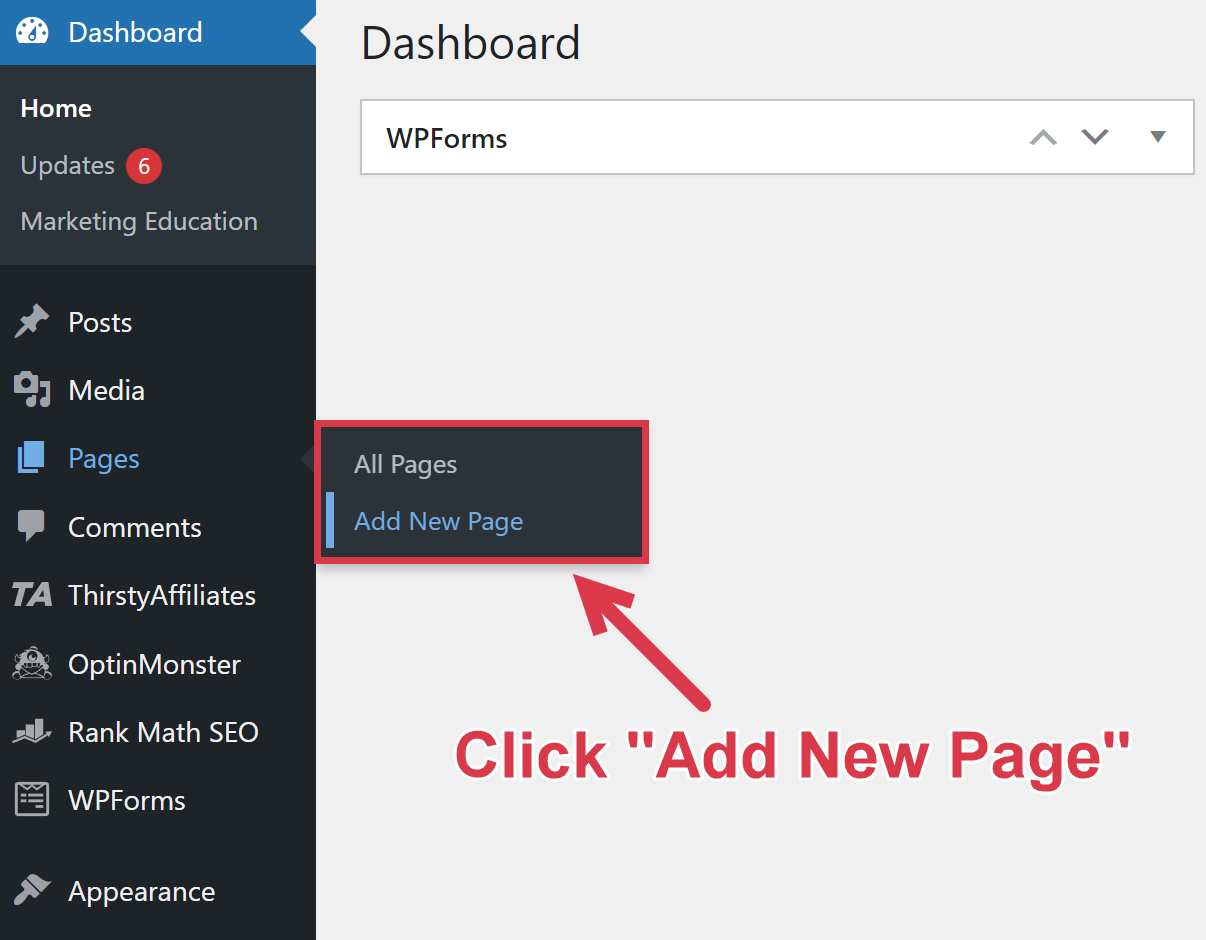
8 Start Creating Content
You’ve put in a lot of work to get to this point, but now you finally get to start creating some book-related content for your new blog.
This is an exciting moment, and you might be tempted to jump in and start writing about the first book that comes to mind.
However, that’s not a smart approach if you want to succeed.
To drive traffic to your blog, I recommend a keyword-focused content strategy. This involves writing content about book-related keywords that people are typing into search engines like Google.
You don’t want to go for the highest-traffic keywords first. While those are the most lucrative, they’re also the most competitive, as many large and established sites will be competing for them. A new book blog stands little chance of ranking.
Instead, you’ll want to find keywords related to your sub-niche with a decent monthly search volume and fairly low competition.
You can use Ahrefs to find these keywords. Just type a “seed keyword” into the Ahrefs Keyword Explorer, and the tool returns a list of relevant related search terms along with their estimated search volumes.
For example, Ahrefs returns the following matching terms when you type in “best romance books”:
| Keyword | Search Volume | Keyword Difficulty |
|---|---|---|
| best fantasy romance books | 1900 | 1 |
| best romance books for young adults | 700 | 7 |
| best romance books of all time | 700 | 28 |
| best werewolf romance books | 600 | 3 |
| best sports romance books | 350 | 1 |
| best christmas romance books | 350 | 1 |
You can use these keywords to come up with blog post titles. Here are a few snappy blog post titles using the keywords above:
- “5 Best Fantasy Romance Books to Read When You Need to Escape”
- “The 10 Best Werewolf Romance Books Will Make You Howl with Desire”
- “Why Readers Love the 25 Best Selling Romance Books of All-Time”
Once you create 10 blog post titles based on your keyword research, it’s time to start writing.
Here are a few tips for writing great book blog posts:
- Understand search intent. Ensure you know what readers want to learn when searching for your target term. When writing book reviews, it helps to look through the reviews on Amazon to see what readers liked and hated about specific books.
- Consider your audience. Keep your audience in mind while you’re writing. Use the language you would if you were talking to them face-to-face. People interested in books want to know what another real reader thinks about a particular book. They usually aren’t looking for a stuffy literature review, so stay casual and explain what you liked and didn’t like about the books you’re reviewing.
- Stay on topic. Stay focused on hitting all the points to satisfy the specific search intent without crossing too far over into other topics.
- Share personal stories. Show that you know what you’re talking about and have experience with the book topic of your post. If you’re reviewing a book, you need to read it beforehand and be able to draw comparisons to other books.
- Link to other posts on your blog. Make sure to link to other relevant posts on your blog. That helps readers find even more of the books they love, and it also keeps them moving through more pages on your site, which can help with SEO.
- Write with emotion. Make sure your enthusiasm for books comes through in your writing. You would drop a dry, boring book in an instant, and other readers will do the same with your blog if you don’t bring some emotion to the table.
- Use images and other visuals. Even though book reviews tend to be heavy on text, good images and graphics can still liven up your posts. If you have real images of physical books you’ve read, those can make a big visual impact.
- Use book platforms for ideas. Platforms like Amazon, Goodreads, Barnes & Noble, and others are loaded with thousands of books to help you develop your reading and review lists. Check out what’s trending on those platforms and use that information to target popular books.
- Cover book news and events. Book releases from major authors in your genre(s) are big events that get a lot of attention. For example, if you review horror books, you can write a series of posts speculating about an upcoming Stephen King book and then review it when it’s out. You can also cover literary festivals and book-related events, either in-person or online.
The success of your book blog ultimately depends on the quality of your content. Focus on tackling keywords your audience is searching for and then write blog posts that answer their questions as thoroughly as possible.
9 Promote Your Book Blog
Creating quality content is crucial to building a profitable book blog, but it’ll take a while for your posts to rank on Google and drive traffic. You should promote your book blog online and in person to kickstart it with early traffic.
Here are some promotional tips that will help readers find your content:
- Share posts in book communities and on social media: Instagram is a hotbed for readers, and the #bookstagram tag alone has nearly 100 million posts. Books are popular on Pinterest, too, and book covers make for attractive pins. There are also several large reading groups on Facebook, and YouTube and TikTok have thriving book communities. All of these are great places to share your work.
- Build an email list: Ask visitors to your book blog to sign up for your list in exchange for a reading-focused giveaway, like tips on how to read faster. Then, whenever you publish a new post, send a preview to your list.
- Collaborate with other book bloggers: You can work with other bloggers to cross-promote each other’s content to your audiences. This strategy works well with complementary sub-niches – for instance, a horror book blogger could collaborate with a sci-fi or fantasy book blogger.
- Join or start a local reading group: Most towns and cities have reading groups, which can be good places to get the word out about your book blog..
- Interview local authors and booksellers: Local authors and bookstores are always looking for more readers and customers. Help them out by interviewing them for your site. You benefit from some great content, and your subject will likely tell their followers to check out the interview on your book blog.
10 Monetize Your Book Blog
You’ve posted the first content on your book blog, and you have a promotional strategy in place. Now it’s time to finally reap the rewards of all your hard work and make some money from your new site!
Here are a few great ways to monetize your book blog:
Affiliate Marketing
Recommend the books you’re reviewing, plus other book-related products. Include affiliate links to vendor sites to earn a commission when your readers buy something.
Why It’s Great: You earn money for leading your audience to great books they’ll love. Amazon is a natural starting point for book blogs because you can link to almost every book you’ll ever review.
Get Started: Check out our guide about how to start affiliate marketing and our list of the best book affiliate programs.
Display Ads
Ads are automatically served to your audience through an ad network or direct sponsorships.
Why It’s Great: You get paid for every piece of content you write just by having your audience show up and serving them ads that align with their interests. You don’t even have to actively promote any offers since the ad network does all the work for you.
Get Started: Sign up for a beginner-friendly ad network like Ezoic. You can move to a higher-paying network like Mediavine or Raptive when you have more traffic.
Selling Your Own Products
Create your own digital or physical products and sell them directly to your site visitors.
Why It’s Great: You can tailor your offering to your audience and keep all of the profits instead of just earning a small commission.
Get Started: Products on your book blog could include courses on how to write books in your genre, merch based on your brand, or authoring your own books and selling them to your audience. Teachable is a great platform for courses, CafePress is great for branded merch, and Amazon KDP is a good option for self-publishing.
Summing Up
Starting a book blog is an exciting journey, and while this guide has given you a solid foundation, there’s always more to uncover.
To build a truly successful book blog, you’ll need to learn the advanced tactics that successful bloggers use to grow profitable websites.
To help you navigate these waters and truly excel in the world of book blogging, we’ve created a free training.
In this training, you’ll learn 7 pivotal strategies that can boost your blog’s success by up to 83%.
Ready to take your book blog to the next level?
FAQs
Book bloggers get paid by monetizing the content on their blogs. There are three primary monetization methods that most book bloggers use:
Affiliate marketing: earning a commission by promoting other people’s books and other reading-related products.
Advertising: using a network like Ezoic to automatically run ads on each book blog post.
Digital sales: creating ebooks (both fiction and nonfiction), courses, and other electronic products, then selling directly to blog readers.
Book blogs are still popular. Many book blogs get tens of thousands of visitors per month, and the most popular blogs get even more than that. And according to Detailed.com, the top book blogs generate hundreds of mentions on social media platforms every month.








